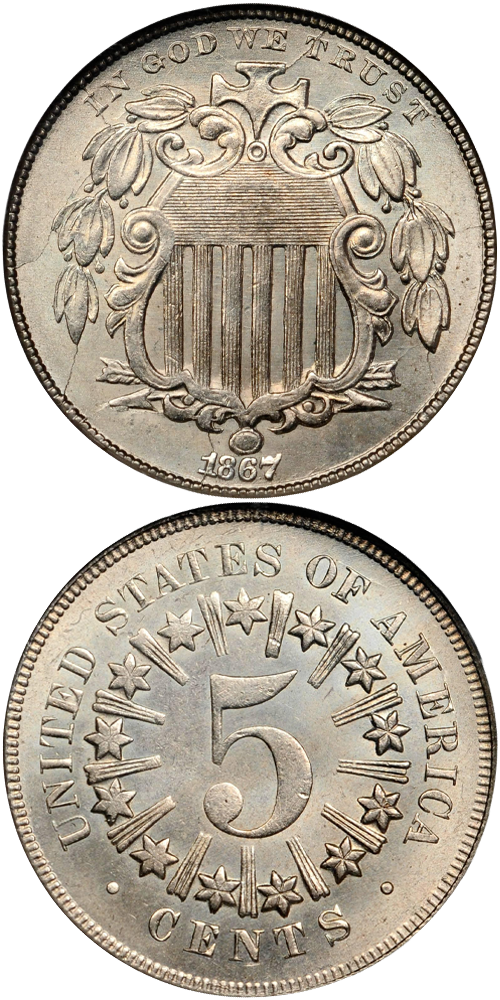1867 Shield Nickel
With Rays
Introduced in 1866, the copper-nickel five-cent piece has remained an integral part of our nation's coinage ever since. The origins of this coin were born out of the suspension of specie payments during the Civil War. Gold coins disappeared from circulation in late 1861 and silver coins in the spring of 1862. Initially the silver half dime was replaced with five-cent Fractional Currency notes, which circulated well after the war concluded in 1865. In order to provide an alternative to these notes, Congress followed the nickel three-cent pieces of 1865 with similar five-cent copper-nickel coins authorized by the Act of May 16, 1866. Both denominations had planchets composed of 75% copper blended with 25% nickel. When initially discussed the proposed weight of the new copper-nickel coin was to be around 30 grains, or about one and a half times the existing but not currently circulating silver half dime. As discussions progressed, Joseph Wharton, whose company's nickel output was larger than any other and who essentially controlled the market, convinced Congress to increase the weight to 77 grains, thereby using more nickel for each coin produced. Mint Engraver James Barton Longacre designed the new coin, with the obverse displaying a large central shield with arrows crossed at its base, draped in a hanging wreath with a broad cross above. The date is below and the motto IN GOD WE TRUST is in small letters at the top. For the reverse a large Arabic numeral 5 is central, with 13 small stars surrounding and 13 glory rays, each alternating in sequence, around the 5. Above the denomination is the legend UNITED STATES OF AMERICA and the word CENTS is below.
The inclusion of the rays on the reverse proved to be problematic. The combination of copper and nickel produced a very hard planchet that was difficult to strike up fully with the intended designs. Furthermore the nickel alloy was so hard that the dies soon developed cracks and did not last long during the coining process. When complaints reached Treasury Secretary McCulloch, he promptly ordered the rays be removed on January 21, 1867, and production was halted until new dies could be created, which came into production on February 1, 1867.
The example to the left was sold by Stack's Bowers Galleries in the August 2011 Chicago Auction, where it realized $4,887.






